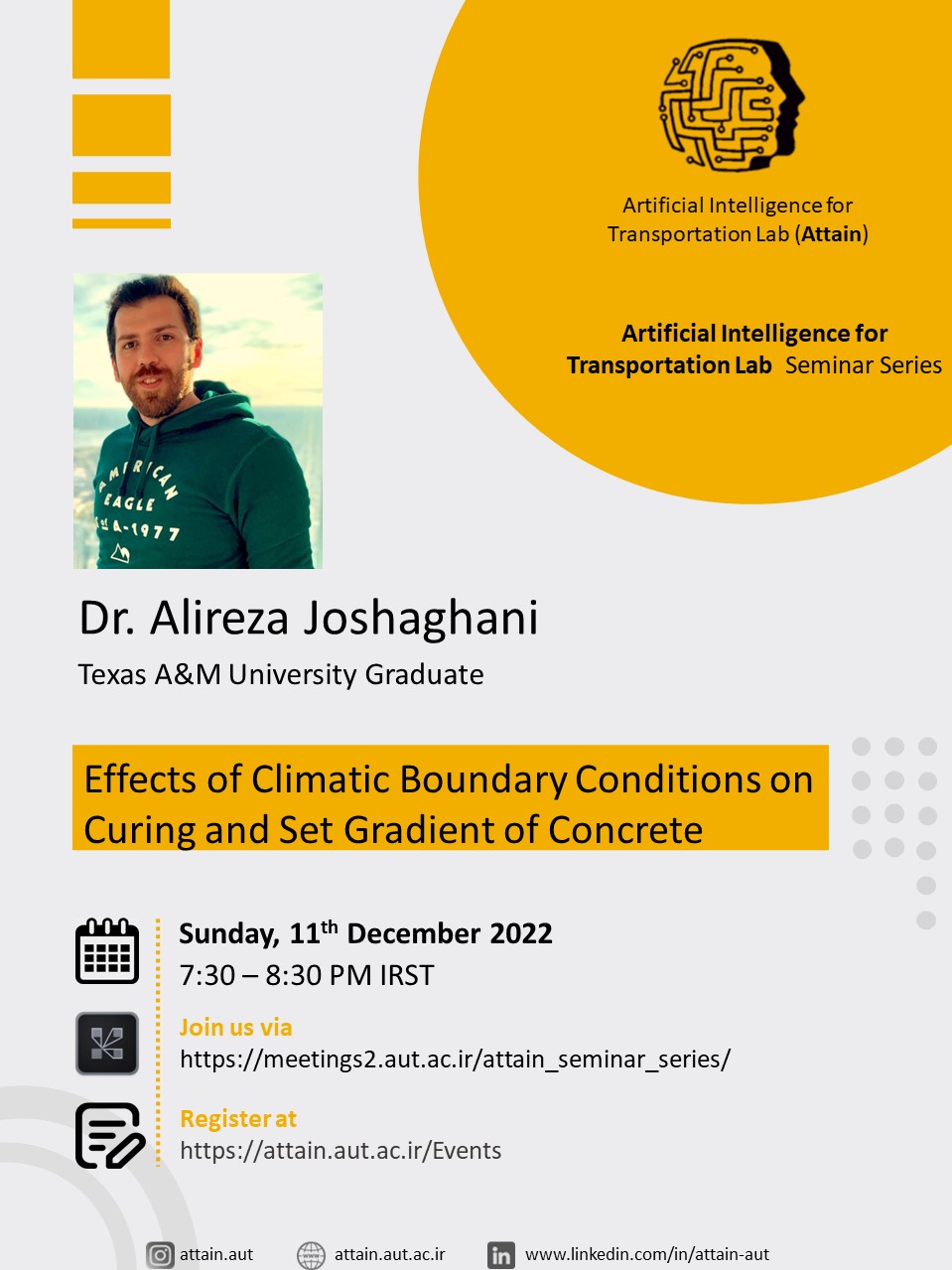
Alireza is a PhD from Texas A&M University. His research interests focus on Concrete, Pavements, and Cementitious Materials. He earned his master’s degree in construction engineering from Amirkabir University of Technology. He used to work for several engineering firms, such as CMS Engineering Group and Pavement Analytics as a research scientist. Now, he is a data analyst at CVS. His main responsibilities are developing decision-making algorithms, interpreting large datasets, and utilizing data-driven models.
The main purpose of this dissertation was to assess the effect of curing practices on early-age concrete pavement behavior with respect to the development of the set gradient based on the laboratory and field experiments. Several methods were used to relate measured aspects of curing to the concrete properties in the laboratory. The purpose of the laboratory experiments was to show the viability of identified curing quality indicators. Then, the preliminary laboratory testing for the field program was conducted to examine the quality of curing under different ranges of curing combinations. These experiments facilitated the determination of an appropriate application rate for a given curing compound under different ranges of ambient environmental conditions. This assessment appeared to be a feasible method of monitoring curing quality performance under different circumstances and over broad areas of concrete pavement construction. Then, concrete curing evaluations were conducted in several field experiments to collect data from the test slabs’ placement. Concrete slabs were placed and cured under different conditions to create different states of stress and creep behavior during and after hardening. The evaluation principally consisted of parameters to evaluate the curing quality and early-age concrete behavior. The concrete temperature and moisture history were important factors that influence the slab curling/warping behavior as well as the set gradient in concrete slabs. These factors were influenced by variations of ambient weather and the curing conditions, which in turn were found to be important with respect to the induced gradients and set in concrete slabs. In this dissertation, the amount of the set or permanent curling/warping built into the test slabs was represented by the difference between the theoretical and the measured strains. Moreover, in a series of field tests, the application of ground-penetrating radar (GPR) provided the basis for justifying the curing effectiveness of the test results in terms of the application rate of the curing compounds and uniformity.

شما می توانید ویدئوی جلسه برگزار شده را مشاهده نموده و مستندات مربوط به آن را از طریق لینک زیر دانلود نمایید.